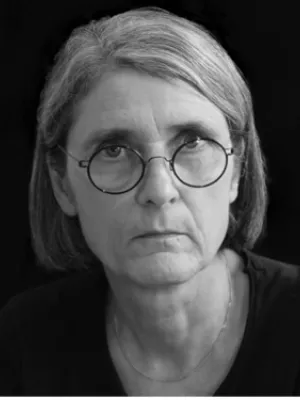
Nina Reistad
Senior lecturer

Simulation and biomechanical characterization of indentation on human skin
Author
Summary, in English
Diffuse Reflectance Spectroscopy (DRS) is a non-invasive and rapid optical method used in many medical diagnosis applications [1], measuring the characteristic reflectance spectrum produced as light passes through tissue. A drawback of this approach is that a pressure is created on the surface of the tissue affecting the optical properties of the studied tissue as well as the light-coupling into the fiber-optic probe [2]. Since DRS-spectra are pressure-dependent, there is a need to link the optical and the mechanical properties.
The human skin is a multi-layered material with complex structure. The purpose of this study is to determine a more accurate relationship between the DRS-spectra in the wavelength range 400 – 1600 nm, and the pressure applied by the probe. Particularly, an axisymmetric FE-model composed of three layers of skin and one of muscle is created in Abaqus to model the mechanical behavior of the skin during the indentation. The material model used is a Neo-Hookean hyperelastic material with parameters initially adopted from [3]. The parameters have then been optimized to match the experimental response of the skin. The model provides a distribution of pressure and stress in the different layers of skin.
Furthermore, in vivo optical measurements were performed with an optical fiber probe coupled to a calibrated loaded-spring system to control the pressure applied on the skin. The first step in the experiments was to calibrate the device. Then, the depth of indentation of the probe on the skin from 0 to 400 g was measured to determine the force applied on the skin, which is different from the load applied on the spring. The curve of the average pressure under the probe function of the weight put on the loaded spring was determined. A systematic pressure dependent pattern has been found in DRS-curves obtained from six human volunteers.
The human skin is a multi-layered material with complex structure. The purpose of this study is to determine a more accurate relationship between the DRS-spectra in the wavelength range 400 – 1600 nm, and the pressure applied by the probe. Particularly, an axisymmetric FE-model composed of three layers of skin and one of muscle is created in Abaqus to model the mechanical behavior of the skin during the indentation. The material model used is a Neo-Hookean hyperelastic material with parameters initially adopted from [3]. The parameters have then been optimized to match the experimental response of the skin. The model provides a distribution of pressure and stress in the different layers of skin.
Furthermore, in vivo optical measurements were performed with an optical fiber probe coupled to a calibrated loaded-spring system to control the pressure applied on the skin. The first step in the experiments was to calibrate the device. Then, the depth of indentation of the probe on the skin from 0 to 400 g was measured to determine the force applied on the skin, which is different from the load applied on the spring. The curve of the average pressure under the probe function of the weight put on the loaded spring was determined. A systematic pressure dependent pattern has been found in DRS-curves obtained from six human volunteers.
Department/s
- Atomic Physics
- Mechanics
Publishing year
2014-10
Language
English
Document type
Conference paper
Topic
- Applied Mechanics
Conference name
Nordic Seminar on Computational Mechanics, 2014
Conference date
2014-10-22 - 2014-10-24
Conference place
Stockholm, Sweden
Status
Published

